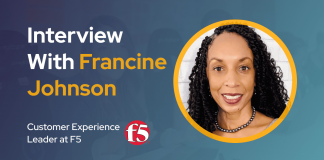Hi Irene, tell us about yourself and your background
I am a Customer Success Influencer, Strategist and Advocate who has been working in this field since before it existed as a function in business. I grew up in a family retail business and we were successful largely because of our focus on customers. It wasn’t until I was working as a consultant at Price Waterhouse that I began to put together how critical customer experience is to the success of a business. Being customer centric was a part of my DNA and it me some time to realize that many people in business don’t come by this naturally. I worked in large companies like Transamerica and Progress Software and I moved to Silicon Valley in the mid 1990s and began my journey in the software industry. I was early to the subscription world, working in the predecessors of SaaS (Application Service Providers) and for the last 10+ years I’ve focused my career on start-ups and have sat in the VP of Customer Success seat multiple times. Lately I’ve focused more on consulting and advising and I’m in the process of getting my book “Who Speaks for the Customer” ready to launch later this year. It’s been a fun and enlightening journey.
What is the biggest misunderstanding about customer experience, in your opinion?
There are so many… I’ll pick one. I think a big misunderstanding is that customer experience is “user” experience. In business, the customer is broader than the just the person who uses the product. It’s different than consumer products. There are always multiple people (or personas) like the economic buyer – who has an objective to achieve, the administrator – who has to operate and maintain the product, and of course the user – who makes use of the product all the time. Many consider “customer experience” to be focused on “user experience” and focus on things like the color scheme, or navigation, or in app content, land all of that is good for the user experience. It is only the customer experience when you reflect the entire customer journey with your company which includes how people learn about your products, how and why they purchase them, how they implement or deploy them in addition to how they use them. It also includes how they get value from them so that they will continue to use them, and hopefully expand their usage.
What are some of the newer CX companies/solutions you’re keeping your eyes on right now?
So many companies are popping up in this space that I can’t even keep track of them. I don’t have any shining stars that come to mind right off the top of my head, but I’m very encouraged to see many companies that are building products for this space and they are also leveraging different models and facets of customer experience. What I think will happen is that there will continue to be a number of new entrants and over the next 5 years I expect to see consolidation and alignment around a few different areas such as leveraging workflows, automating content using AI and Machine Learning, and focusing on how customers get value from products versus how they use them.
Irene’s tips for improved customer loyalty
What can companies do to improve customer loyalty and retention?
The biggest thing I think companies can do is to really actively listen to their customers. Sounds basic right? Even with the age of the customer emerging over the last 7-10 years, I still regularly encounter companies that believe that “we know better” than our customers what they need. This doesn’t mean doing everything your customer asks you to do, but it does mean listening deeply to understand why they are asking for something so that you can solve the root problem. It really is basics, have a customer journey that you maintain, know when and how you interact and make every interaction valuable for the customer and listen.
What do you think is most relevant and why: CSAT (Customer Satisfaction Score), NPS (Net Promoter Score), or CES (Customer Effort Score)?
It’s a false dichotomy to have to choose one. All three of these measures are relevant and most are misused. CSAT is a great measure of an interaction for a touchpoint. Did my customer get what they needed out of their sales process with us, when we solved their problem ticket, or how we addressed their question. NPS is a great measure of how well they like us and our product and it is a good tool to have among others and to measure consistently and regularly to see about sifts over time or when business practices change. CES is a great measure of how easy it is to work with you as a company. All of these have a place, but the biggest challenge and where most companies go wrong is that they measure and they never provide feedback BACK to the customer to share what they have done with the results of what is learned. Did they make changes to improve things when scores were bad? Was there expanded business through referrals? The feedback loop needs to be architected and managed otherwise asking customers for input and feedback becomes a big detractor. I’ve heard many customer say “I don’t know why they bother asking me – no one ever listens”. Even if the feedback isn’t going to be addressed, it’s important that the customer knows they were heard and why it isn’t being addressed.
How can companies better use social media in the era of customer-centricity and personalization?
I’m not sure. I think Social Media is a real mixed bag and it probably depends on who the target customer is, and how that plays out with the various personas. Is it the buyer? The user? The Administrator? What social media are these personas likely to use? Only if you are reaching your audience directly do I think it makes sense. In terms of personalization, I think that is something that definitely can be leveraged within both the product experience and the customer experience (be it automated or human). It’s very tricky in business and I would caution to go slowly and do a lot of testing to ensure that systemic bias is not being introduced culturally, or by gender or other characteristics of customer groups.
What is your opinion on AI-based chatbots to handle customer support?
I think that they have they place and can be valuable. I also think that they can create frustration with customers if they don’t have the right content and are architected in a way that takes too much effort. The thing that I think is missing from most of the implementations I’ve seen in this space is that the content is not well managed. Without the specific content to serve up through AI or Chatbots at the appropriate time, they can be a distractor. Using them as a data collection tool to get the right information into the hands of the person who is actually going to solve the problem (and doing that efficiently and quickly) is a great tool. So it’s a mixed result.
What was the best movie you saw that has come out during this past year?
I wasn’t watching too many movies this year – I’m not a big movie person anyway. The one that comes to mind is a documentary about people with disabilities and how they worked collaboratively to get more accessibility. It’s called Crip Camp and is the story of a group of campers from a disability camp who all grew up to be activists ad ended up passing major legislation that in my mind was a stepping stone to understanding how diversity and differences can be accepted and also add value to teams. Worth watching.
Last but not least, what is your favorite CX metric?
Hands down Net Recurring Revenue. This is the key overall metric that points to the success of the business and it is customer centric. I believe strongly that every employee in a company should have some component of NRR in their measurements. It makes a huge difference in how they consider decisions and helps everyone become customer focused.
A close second would be CRC (Cost to retain a customer). Almost never measured and a very important metric that I believe will start to become more prevalent as companies become more customer focused. Without knowing what you are spending to retain and expand customers you can’t really manage your business very well, especially once you get past your growth curve and business levels off.






